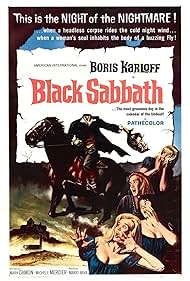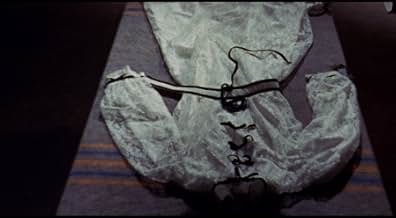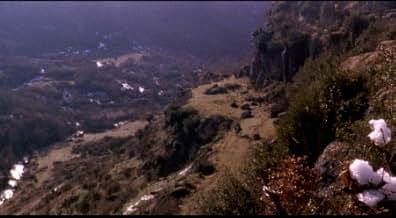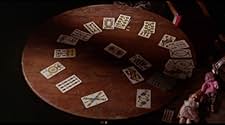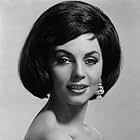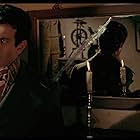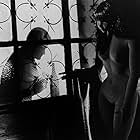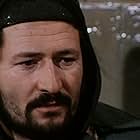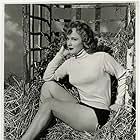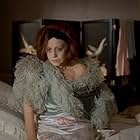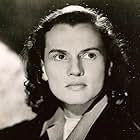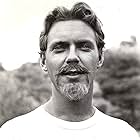IMDb RATING
7.0/10
15K
YOUR RATING
Boris Karloff hosts a trio of horror stories about a stalked call girl, a vampire-like monster who preys on his family, and a nurse who is haunted by her ring's rightful owner.Boris Karloff hosts a trio of horror stories about a stalked call girl, a vampire-like monster who preys on his family, and a nurse who is haunted by her ring's rightful owner.Boris Karloff hosts a trio of horror stories about a stalked call girl, a vampire-like monster who preys on his family, and a nurse who is haunted by her ring's rightful owner.
- Awards
- 2 wins & 1 nomination
Lidia Alfonsi
- Mary (segment "Il telefono")
- (as Lydia Alfonsi)
Rika Dialyna
- Maria (segment "I Wurdalak")
- (as Rica Dialina)
Milly
- The Maid (segment "La goccia d'acqua")
- (as Milly Monti)
Milo Quesada
- Frank Rainer (segment "Il telefono")
- (uncredited)
Storyline
Did you know
- TriviaThis film served as inspiration for the naming of the heavy metal band Black Sabbath. In 1968, the band (then called Earth) was playing a small club in Birmingham, England. Across the street was a movie theater showing the film Black Sabbath. The band noticed that more people were in line to see the movie than were to see the band. Realizing that "horror sells tickets" they decided to change the band's name to Black Sabbath.
- GoofsThe narration of this film's English-dubbed version claims that "The Wurdulak" was written by Tolstoy and that "The Drop of Water" was written by Chekhov. The first claim is misleading; "The Wurdulak" was not written by Leo Tolstoy, the famous author of "War and Peace", but by minor novelist Alexei Tolstoy. The second claim is completely untrue; Anton Chekhov never wrote a short story titled "The Drop of Water" or any story with a plot resembling that of the so-named segment of this film.
- Alternate versionsAs documented by Tim Lucas (in Video Watchdog #5), the order of the segments was rearranged by AIP for the English-language release. The original ordering was: "The Telephone," "The Wurdalak," and "The Drop of Water." In addition, "The Telephone" was re-dubbed and slightly re-cut by Bava at AIP's request to create a supernatural angle and disguise the lesbian overtones of the story.
- ConnectionsFeatured in Hatchet for the Honeymoon (1970)
Featured review
I don't know if Sam Arkoff knows it, but the moment AIP renamed "I Tre Volti Della Paura" into "Black Sabbath" for the American release they were writing 20th century history. A couple of years later a relatively unknown band from Birmingham, inspired by Mario Bava's Gothic horror anthology, would name their band Black Sabbath and proceed to become one of the most well known and influential bands of the last 30 years.
Black Sabbath starts off wisely with the weakest story in the movie, "The Telephone". There's nothing incredibly exciting going on, and the interior setting doesn't allow Bava to fully exercise his usual flair in visuals and atmosphere, rendering this segment a rather routine affair. Any historical significance the segment might have in the shaping of the giallo is made redundant by the fact that Bava himself would go on to define the genre a few years later with Blood and Black Lace.
The patient viewer will be amply rewarded by the following two segments though. The Wurdulak, featuring a ghastly Boris Karloff in one of his best roles, and A Drop of Water, with Jacqueline Pierreux in the role of a greedy nurse, are both the epitome of Mario Bava's Gothic style in colour.
What makes Black Sabbath so vibrant and captivating is the use of colour in lighting. Going against every rule and defying every sense of historic realism, Bava employs colours from every end of the palette (from magenta to cyan) and lights his sets in the most imaginative ways. It may seem arbitrary, and it may very well be, but the effect cannot be dismissed. It works. Imagine Seijun Suzuki circa Tokyo Drifter doing Black Sunday in colour and you get pretty close to what Bava strives for lighting-wise. There's a pop art sensibility that contrasts beautifully with the stern tone of the movie. Combined with misty exteriors, long shadows and a baroque opulence, Bava mutates Gothic horror into a unique beast that is simultaneously very familiar and extravagantly exotic.
What's even more admirable is that Black Sabbath is actually scary. Well not in the traditional sense anymore, no. But there are genuinely chilling moments. I can't even begin to imagine how horrifying the ending of A Drop of Water or Boris Karloff's face seen through a smudged glass in The Wurdulak would have been to unsuspecting audiences back in 1963.
In conclusion; seek this movie out, but know what you're getting into. This is old school Gothic horror with a unique visual flair, a penchant for atmosphere and a great Boris Karloff. In the Gothic horror Bava scale, I would rank it somewhere between Kill! Baby! Kill... (Bava's other masterpiece) and Lisa and the Devil, if that means anything.
Black Sabbath starts off wisely with the weakest story in the movie, "The Telephone". There's nothing incredibly exciting going on, and the interior setting doesn't allow Bava to fully exercise his usual flair in visuals and atmosphere, rendering this segment a rather routine affair. Any historical significance the segment might have in the shaping of the giallo is made redundant by the fact that Bava himself would go on to define the genre a few years later with Blood and Black Lace.
The patient viewer will be amply rewarded by the following two segments though. The Wurdulak, featuring a ghastly Boris Karloff in one of his best roles, and A Drop of Water, with Jacqueline Pierreux in the role of a greedy nurse, are both the epitome of Mario Bava's Gothic style in colour.
What makes Black Sabbath so vibrant and captivating is the use of colour in lighting. Going against every rule and defying every sense of historic realism, Bava employs colours from every end of the palette (from magenta to cyan) and lights his sets in the most imaginative ways. It may seem arbitrary, and it may very well be, but the effect cannot be dismissed. It works. Imagine Seijun Suzuki circa Tokyo Drifter doing Black Sunday in colour and you get pretty close to what Bava strives for lighting-wise. There's a pop art sensibility that contrasts beautifully with the stern tone of the movie. Combined with misty exteriors, long shadows and a baroque opulence, Bava mutates Gothic horror into a unique beast that is simultaneously very familiar and extravagantly exotic.
What's even more admirable is that Black Sabbath is actually scary. Well not in the traditional sense anymore, no. But there are genuinely chilling moments. I can't even begin to imagine how horrifying the ending of A Drop of Water or Boris Karloff's face seen through a smudged glass in The Wurdulak would have been to unsuspecting audiences back in 1963.
In conclusion; seek this movie out, but know what you're getting into. This is old school Gothic horror with a unique visual flair, a penchant for atmosphere and a great Boris Karloff. In the Gothic horror Bava scale, I would rank it somewhere between Kill! Baby! Kill... (Bava's other masterpiece) and Lisa and the Devil, if that means anything.
- chaos-rampant
- Mar 29, 2008
- Permalink
Details
- Release date
- Countries of origin
- Language
- Also known as
- Die drei Gesichter der Furcht
- Filming locations
- Production companies
- See more company credits at IMDbPro
- Runtime1 hour 37 minutes
- Sound mix
- Aspect ratio
- 1.85 : 1
Contribute to this page
Suggest an edit or add missing content

